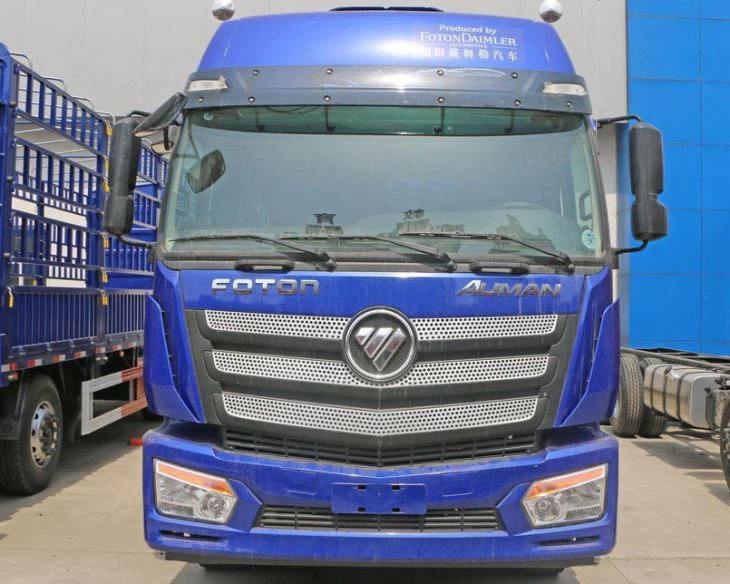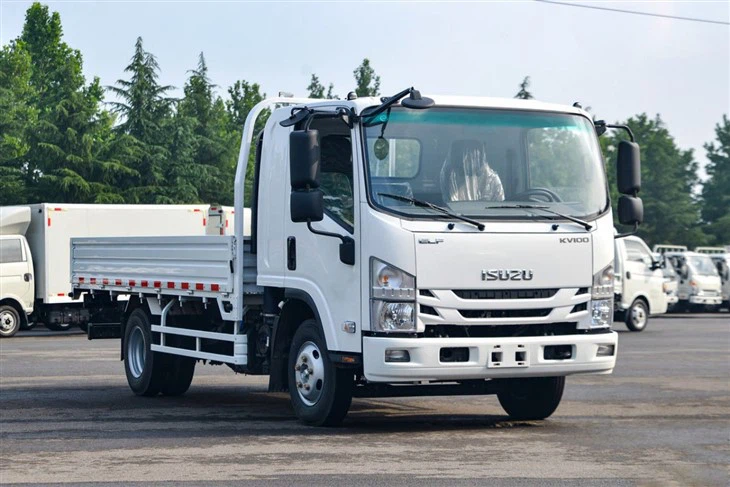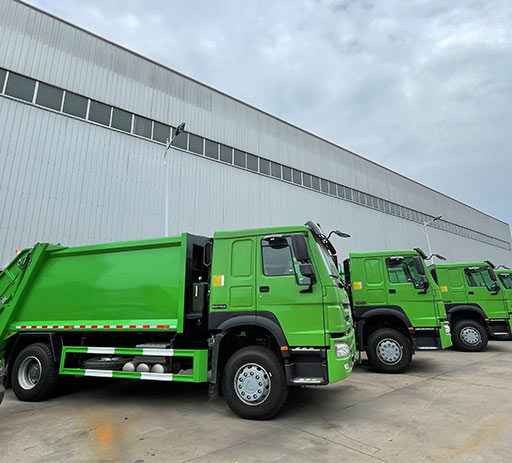Everything You Need to Know About Truck Sweepers

Introduction
Maintaining cleanliness in urban environments is a significant challenge faced by municipalities and industries alike. One of the most efficient and effective solutions to this problem is the use of truck sweepers. These specialized vehicles are designed to clean roads, parking lots, and other surfaces by removing debris, dirt, and pollutants. This article explores the functionality, types, features, benefits, maintenance, and more about truck sweepers, offering insights for potential buyers, operators, and those interested in urban cleanliness initiatives.
What is a Truck Sweeper?

A truck sweeper is a heavy-duty vehicle equipped with brushes and vacuum components that are used to clean surfaces such as roads, footpaths, and parking lots. Truck sweepers can handle a variety of debris—from leaves and dirt to heavier items like rocks and litter—making them essential for municipal cleaning, construction sites, and various commercial applications.
How Truck Sweepers Work
Truck sweepers typically operate through a combination of brushes and suction. Here’s a breakdown of their operating mechanism:
- Brushes: Rotating brushes agitate the debris on the road surface, loosening it for easy removal.
- Suction System: A powerful vacuum system sweeps up the loosened debris and deposits it into a collection hopper.
- Water Spray: Many models include a water spray feature to keep dust down during operation.
Types of Truck Sweepers
1. Regenerative Air Sweepers
These sweepers utilize a combination of air and vacuum to clean surfaces. They are particularly effective for removing fine dust and leave surfaces clean without damaging the pavement.
2. Vacuum Sweepers
Vacuum sweepers rely solely on suction to collect debris. They are ideal for picking up larger items and are often used in industrial settings.
3. Mechanical Sweepers
Mechanical sweepers use rotating brushes to lift debris and direct it into a collection bin. They are more commonly used for street cleaning in urban settings.
4. Combination Sweepers
These models combine features of both mechanical and vacuum sweepers, allowing for more versatile cleaning capabilities. They can handle various debris types effectively.
Key Features to Look For
When selecting a truck sweeper, consider the following features to ensure you choose the best model for your needs:
1. Hopper Capacity
The size of the hopper determines how much debris the sweeper can collect before needing to be emptied. Larger hoppers reduce downtime associated with frequent emptying.
2. Brush System
Look for robust brush systems that can be easily replaced. Adjustable brushes can accommodate different surface types and improve cleaning efficiency.
3. Dust Control Mechanisms
Effective dust control features, such as water sprays and filtration systems, are essential for maintaining air quality during sweeping.
4. Maneuverability
Consider the turning radius and overall size of the sweeper, especially if you need to navigate tight areas or urban streets.
5. Fuel Efficiency
With rising fuel costs, choosing a fuel-efficient model can lead to significant long-term savings. Look for sweepers known for their economical fuel consumption.
Benefits of Using Truck Sweepers
Investing in truck sweepers offers numerous advantages, such as:
1. Enhanced Cleanliness
Regular use of truck sweepers can significantly improve cleanliness in public spaces, leading to a healthier environment.
2. Time and Labor Savings
Truck sweepers can cover large areas quickly, reducing the man-hours required for manual cleaning.
3. Pollution Reduction
By removing debris and pollutants, truck sweepers contribute to improved air quality and overall urban health.
4. Improved Aesthetics
Regular sweeping helps maintain the visual appeal of neighborhoods, parks, and commercial areas, contributing to community pride.
5. Cost-Effectiveness
In the long run, the initial investment in a truck sweeper can lead to lower maintenance costs for public roads and facilities.

Maintenance Best Practices for Truck Sweepers
Proper maintenance is crucial for keeping truck sweepers functioning effectively. Here are some recommended practices:
1. Regular Inspections
Perform regular inspections of key components, including the brushes, vacuum systems, and filters. Identify and address issues before they escalate.
2. Clean the System
After each use, clean the hopper and filters to prevent buildup of debris and ensure the vacuum system operates at optimal efficiency.
3. Lubricate Moving Parts
Regularly lubricate moving parts based on the manufacturer’s recommendations to minimize wear and extend the life of the equipment.
4. Monitor Wear and Tear
Keep an eye on the condition of brushes and belts. Replace them as needed to maintain effective cleaning performance.
5. Check Fluid Levels
Regularly check and maintain appropriate fluid levels, including hydraulic fluid and engine oil.
Practical Examples of Truck Sweeper Applications
Truck sweepers are employed in various sectors, as illustrated in the following examples:
1. Municipalities
City councils utilize truck sweepers for regular street cleaning to maintain public hygiene and aesthetics. This includes removing litter post-events or during seasonal changes.

2. Construction Sites
Construction firms use truck sweepers to keep site access roads clear of debris, increasing safety and complying with environmental regulations.
3. Parking Lots
Commercial property owners hire truck sweepers to keep their parking lots clean, which enhances the customer experience and maintains property value.
4. Airports
Airports employ truck sweepers to clean runways, taxiways, and terminal areas. This is critical for safety and maintaining operational efficiency.
Truck Sweeper Buying Guide
If you’re considering purchasing a truck sweeper, here are some essential factors to keep in mind:
1. Define Your Needs
Assess the area you need to clean, the type of debris generally encountered, and your budget constraints before selecting a model.
2. Research Brands and Models
Investigate different manufacturers and product specifications. Look for reliability, after-sales support, and warranty options.
3. Test Drive the Sweeper
Whenever possible, test the sweeper’s operation to gauge its performance, ease of use, and comfort for the operator.
4. Consider Leasing vs. Buying
If your needs are temporary or project-based, consider leasing a truck sweeper as a cost-effective alternative to purchasing.
5. Evaluate Financing Options
Research various financing options available for purchasing a truck sweeper, including loans and leasing arrangements.
FAQs About Truck Sweepers
1. What types of surfaces can truck sweepers clean?
Truck sweepers are versatile and can clean a variety of surfaces, including asphalt, concrete, gravel, and even some turf areas.
2. How often should truck sweepers be used?
Usage frequency depends on location and debris levels. Municipalities may require daily sweeping, while commercial areas might opt for weekly or monthly schedules.
3. Are truck sweepers environmentally friendly?
Yes, modern truck sweepers are designed to reduce air pollution and dust by using water sprays and other dust control technologies.
4. Can I operate a truck sweeper without special training?
While not always required, it is recommended that operators receive training to ensure safe and effective use of the equipment.
5. How can I determine the right truck sweeper for my needs?
Consider factors such as cleaning area size, type of debris, budget, and specific operational needs when selecting a truck sweeper.
6. What is the average lifespan of a truck sweeper?
With proper maintenance, a truck sweeper can last between 10 to 15 years, depending on usage and care.
